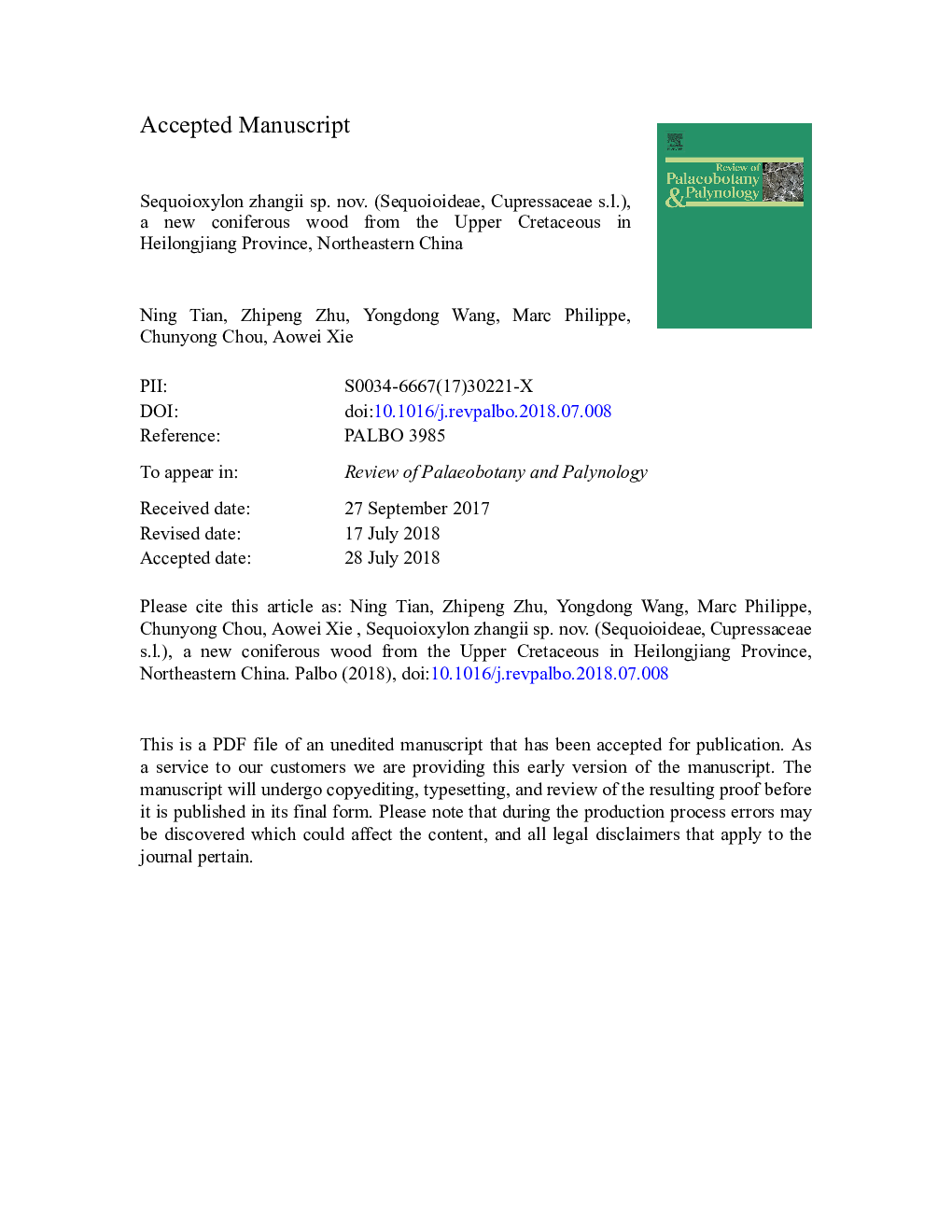| Article ID | Journal | Published Year | Pages | File Type |
|---|---|---|---|---|
| 8916593 | Review of Palaeobotany and Palynology | 2018 | 37 Pages |
Abstract
A new coniferous species Sequoioxylon zhangii sp. nov. is described on the basis of an anatomically well-preserved fossil wood specimen from the Upper Cretaceous in Keshan County of Heilongjiang Province, NE China. S. zhangii is anatomically characterized by abundant axial wood parenchyma, uni-biseriate bordered pits, taxodioid cross-field pits, uniseriate rays 1-31 (usually 3-15) cells in height, and the occurrence of axial and horizontal traumatic resin canals. Such a combination of wood anatomy features agrees well with the diagnostic characters of fossil wood morphogenus Sequoioxylon Torrey. The new species may represent an extinct taxon of the subfamily Sequoioideae of the Cupressaceae s.l. This new finding represents the first record of Sequoioxylon Torrey from China, and provides insights into the origin and evolution of the extant taxodiaceous Cupressaceae, especially the subfamily Sequoioideae. Anatomically, the new species shows a combination of anatomical characters of different groups of the extant Sequoioideae. This fossil may provide additional evidences to support the view that Sequoia was originated from a recombination between Metasequoia and Sequoiadendron as a result of reticulate evolution.
Related Topics
Physical Sciences and Engineering
Earth and Planetary Sciences
Palaeontology
Authors
Ning Tian, Zhipeng Zhu, Yongdong Wang, Marc Philippe, Chunyong Chou, Aowei Xie,
